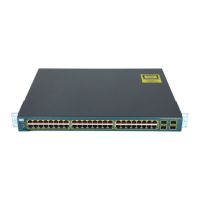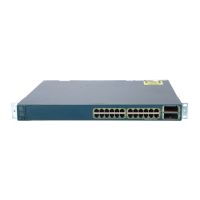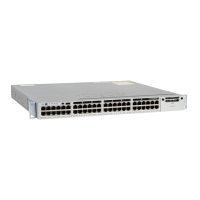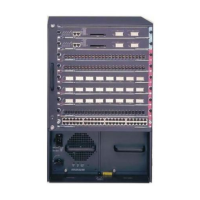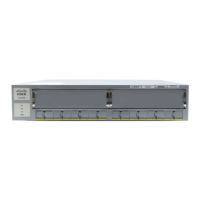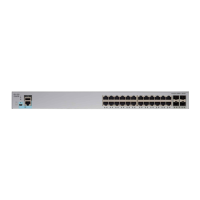27-15
Catalyst 3750 Switch Software Configuration Guide
78-16180-02
Chapter 27 Configuring SPAN and RSPAN
Configuring SPAN and RSPAN
Creating a Local SPAN Session and Configuring Ingress Traffic
Beginning in privileged EXEC mode, follow these steps to create a SPAN session, to specify the source
ports or VLANs and the destination ports, and to enable ingress traffic on the destination port for a
network security device (such as a Cisco IDS Sensor Appliance).
Note Refer to the “Creating a Local SPAN Session” section on page 27-12 for details about the keywords not
related to ingress traffic.
To delete a SPAN session, use the no monitor session session_number global configuration command.
To remove a source or destination port or VLAN from the SPAN session, use the no monitor session
session_number source {interface interface-id | vlan vlan-id} global configuration command or the no
Command Purpose
Step 1
configure terminal Enter global configuration mode.
Step 2
no monitor session {session_number | all |
local | remote}
Remove any existing SPAN configuration for the session.
Step 3
monitor session session_number source
{interface interface-id | vlan vlan-id} [, | -]
[both | rx | tx]
Specify the SPAN session and the source port (monitored port).
Step 4
monitor session session_number
destination {interface interface-id [, | -]
[encapsulation replicate] [ingress {dot1q
vlan vlan-id | isl | untagged vlan vlan-id |
vlan vlan-id}]}
Specify the SPAN session, the destination port, the packet
encapsulation, and the ingress VLAN and encapsulation.
For session_number, specify the session number entered in step 3.
For interface-id, specify the destination port. The destination
interface must be a physical port; it cannot be an EtherChannel, and
it cannot be a VLAN.
(Optional) [, | -] Specify a series or range of interfaces. Enter a space
before and after the comma or hyphen.
(Optional) Enter encapsulation replicate to specify that the
destination interface replicates the source interface encapsulation
method. If not selected, the default is to send packets in native form
(untagged).
Enter ingress with keywords to enable ingress traffic forwarding on
the destination port and specify the encapsulation type:
• dot1q vlan vlan-id—Forward ingress packets with 802.1Q
encapsulation with the specified VLAN as the default VLAN.
• isl—Forward ingress packets with ISL encapsulation.
• untagged vlan vlan-id or vlan vlan-id—Forward ingress packets
with untagged encapsulation type with the specified VLAN as
the default VLAN.
Step 5
end Return to privileged EXEC mode.
Step 6
show monitor [session session_number]
show running-config
Verify the configuration.
Step 7
copy running-config startup-config (Optional) Save the configuration in the configuration file.

